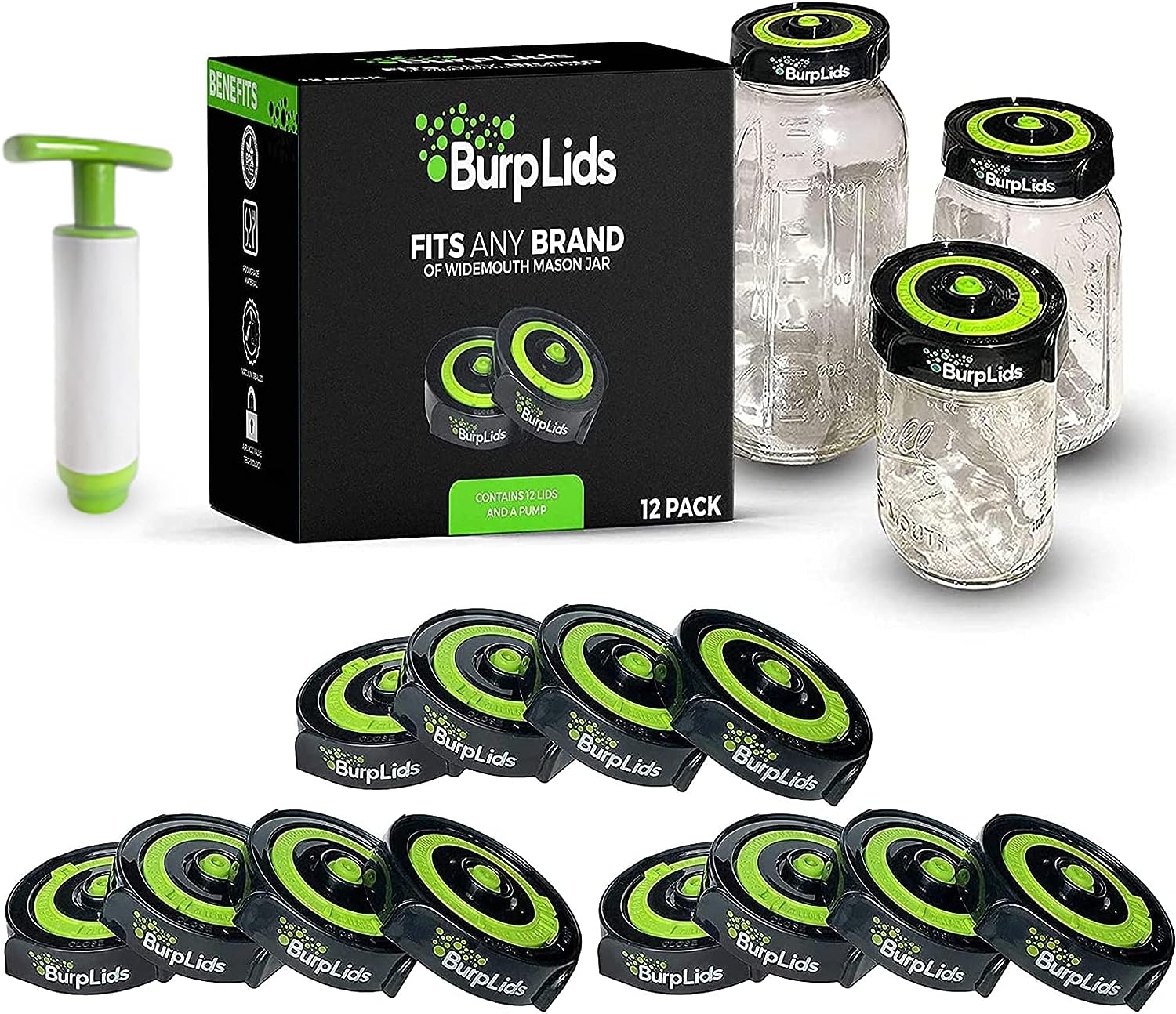What is Produced During Fermentation? Exploring the Process
Fermentation is a centuries-old process that transforms raw materials into valuable products. It plays a crucial role in multiple industries, including food and beverage production, pharmaceuticals, and biofuel production.
The Flavors and Health Benefits of Fermentation

Fermentation is responsible for creating unique flavors and textures in our favorite foods and beverages. Whether it's the tangy taste of yogurt or the bubbly goodness of beer, fermentation enhances our culinary experiences.
But fermentation offers more than just taste. It also provides numerous health benefits. Fermented foods are rich in probiotics, which promote a healthy gut and boost our immune system. Additionally, fermentation increases the bioavailability of nutrients, making them more easily digestible and nutritious.
Fermentation in Sustainable Biofuel Production
Fermentation has gained popularity in recent years for its potential in sustainable biofuel production. By harnessing the power of microorganisms, organic materials can be converted into energy sources, reducing our reliance on fossil fuels and mitigating environmental impact.
Uncovering the Secrets of Fermentation
Join us as we delve deeper into the world of fermentation and explore its fascinating role in various industries. Discover how this ancient process continues to shape our world today.
The Fascinating World of Fermentation
The fermentation process is an essential and fascinating aspect of the food and beverage industry. It involves the conversion of organic compounds into useful products through the action of microorganisms. These microorganisms, such as yeast and bacteria, play a crucial role in breaking down substrates like sugar and starch in the presence of specific environmental conditions like temperature and pH.
The Two Stages of Fermentation
At its core, fermentation is a metabolic process that converts carbohydrates into alcohol or organic acids. The process can be divided into two main stages: primary fermentation and secondary fermentation.
Primary Fermentation
In the primary stage, microorganisms, typically yeast, convert the sugar in the substrate into alcohol, carbon dioxide, and energy. This stage is responsible for the initial production of ethanol, a key component in many fermented beverages like beer and wine.
Secondary Fermentation
Secondary fermentation occurs once the primary fermentation is complete. This stage involves the conversion of the byproducts of primary fermentation into other compounds. For example, in the production of wine, secondary fermentation is responsible for the development of complex flavors and the conversion of malic acid into lactic acid. In some cases, this stage can also contribute to the production of carbonation, as seen in sparkling wines.
Types of Fermentation
There are several types of fermentation, each with its own unique characteristics and end products:
Lactic Acid Fermentation
- Commonly used in the production of yogurt, sauerkraut, and other fermented foods
- Carried out by lactic acid bacteria
- Produces lactic acid as the main end product
Ethanol or Alcohol Fermentation
- Used to produce alcoholic beverages like beer, wine, and spirits
- Carried out by yeast
- Converts sugars into ethanol and carbon dioxide
Acetic Acid Fermentation
- Responsible for the production of vinegar
- Involves the conversion of ethanol into acetic acid by acetic acid bacteria
The Importance of Understanding Fermentation
Understanding the fermentation process is essential for anyone interested in food and beverage production, as it allows for the creation of a wide range of delicious and nutritious products. Whether it's the tangy flavor of yogurt, the refreshing effervescence of beer, or the complex notes of wine, fermentation plays a crucial role in creating these culinary delights. So next time you enjoy a fermented product, take a moment to appreciate the intricate chemical reactions and the microorganisms that make it all possible.
Fermentation and Its Wide Range of Products
Fermentation is a fascinating process that is used in various industries to produce a wide range of products. Let's explore some of the main products that are created through fermentation.
Alcoholic Beverages
One of the most well-known products of fermentation is alcoholic beverages, such as beer, wine, and spirits. During the fermentation process, yeast converts sugars into alcohol and carbon dioxide, resulting in the delicious beverages that we enjoy. The type of yeast and the specific fermentation conditions determine the flavor, aroma, and alcohol content of the final product. From crisp lagers to robust red wines, the world of fermented beverages is vast and diverse.
Lactic Acid Foods
Fermentation also plays a crucial role in the production of lactic acid in foods like yogurt, sauerkraut, and pickles. Lactic acid bacteria convert sugars into lactic acid, giving these foods their tangy and slightly sour taste. In addition to the distinctive flavor, fermentation also enhances the shelf life and nutritional value of these foods. The beneficial bacteria produced during fermentation promote gut health and digestion, making fermented foods a valuable addition to a balanced diet.
Biofuels
Biofuels, such as ethanol, are another important product of fermentation. Crops like corn and sugarcane are fermented to produce ethanol, which can be used as a renewable energy source. Ethanol can be blended with gasoline to reduce greenhouse gas emissions and dependence on fossil fuels. The fermentation of these crops offers a sustainable alternative to traditional energy sources and contributes to the development of a more environmentally friendly society.
Pharmaceuticals, Enzymes, and Industrial Chemicals
Fermentation also has a significant impact on the production of pharmaceuticals, enzymes, and industrial chemicals. Many medications, including antibiotics and vaccines, are produced through fermentation. The process allows for the large-scale production of these crucial drugs in a cost-effective manner. Enzymes, which are essential in various industrial processes, can also be produced through fermentation. From laundry detergents to food processing, enzymes play a vital role in improving efficiency and reducing environmental impact.
The Science Behind Fermentation
The science behind fermentation is a fascinating topic that delves into the biochemical reactions that occur during the process. When we ferment foods and beverages, we are essentially harnessing the power of enzymes and microorganisms to break down complex molecules into simpler compounds. This breakdown is what creates the unique flavors, aromas, and textures that we associate with fermented products.
The Role of Enzymes
Enzymes play a crucial role in fermentation by acting as catalysts for the chemical reactions that take place. They speed up the conversion of sugars and other carbohydrates into alcohol or acids, depending on the type of fermentation. For example, in the case of wine or beer fermentation, yeast enzymes convert sugars into alcohol, while in sauerkraut or kimchi fermentation, lactic acid bacteria convert sugars into lactic acid.
The Key Players: Microorganisms
Microorganisms, such as bacteria and yeast, are the key players in fermentation. They consume the sugars present in the food or beverage and produce byproducts like alcohol, acids, and gases as a result. These microorganisms thrive in the anaerobic (oxygen-free) environment created during fermentation, and their metabolic activity is what gives fermented products their unique characteristics.
The Metabolic Pathways

One of the most well-known metabolic pathways involved in fermentation is glycolysis. This pathway is responsible for breaking down glucose, the primary sugar used by most microorganisms, into smaller molecules called pyruvate. This breakdown releases energy and generates the building blocks needed for the production of alcohol or acids.
The science behind fermentation is a complex yet fascinating process that involves the action of enzymes and microorganisms to break down sugars and other carbohydrates into alcohol or acids. The metabolic pathways, such as glycolysis, play a crucial role in these biochemical reactions. Understanding the science behind fermentation not only helps us appreciate the art of fermentation but also allows us to experiment and create unique flavors and textures in our own fermented foods and beverages. So next time you enjoy a slice of sourdough bread or a glass of kombucha, take a moment to appreciate the science that went into making them.
While we've discussed the science behind fermentation extensively, many people often wonder, what is the difference between fermented and pickled foods. Although both processes are used to preserve and enhance the flavors of food, they involve different methods and ingredients. Fermented foods undergo a metabolic process where natural bacteria feed on the sugar and starch in the food, creating alcohol or acids. In contrast, pickling is a process where food is preserved in an acidic medium, typically vinegar. Both methods offer their unique tastes and health benefits, and they are a testament to the ingenuity of traditional food preservation techniques.
The Advantages of Fermentation
Fermentation is a centuries-old food processing method that offers numerous advantages over other techniques. Here are some key benefits of fermentation:
- Preservation: Fermentation creates an acidic and anaerobic environment that inhibits the growth of harmful bacteria and molds, effectively preserving the food. This natural preservation method allows for the consumption of foods that would otherwise spoil quickly, reducing food waste and saving money.
- Health Benefits: Consuming fermented products can improve digestion and promote gut health. During the fermentation process, beneficial bacteria, known as probiotics, are produced. These probiotics help to maintain a healthy balance of gut bacteria, which is essential for proper digestion and overall well-being. Research has also shown that consuming fermented foods may enhance the body's ability to absorb nutrients and support a healthy immune system.
- Biofuel Production: Fermentation can be used to convert organic materials, such as agricultural waste and crops, into biofuels like ethanol. Unlike fossil fuels, biofuels produced through fermentation are renewable and have a lower carbon footprint. This makes fermentation a more sustainable option for energy production, reducing reliance on non-renewable resources and contributing to efforts to combat climate change.
Overall, fermentation offers numerous advantages over other food processing methods. It provides a natural way to preserve and extend the shelf life of foods, while also offering potential health benefits through the production of probiotics. Additionally, fermentation can be used as a renewable energy source, making it a more sustainable option for biofuel production. So, next time you enjoy a jar of sauerkraut or a glass of kombucha, remember that you're not only treating your taste buds but also reaping the benefits of fermentation for your health and the environment.
The Delightful World of Fermentation
Fermentation is a fascinating process that has been used for centuries to transform and preserve food and beverages. It not only adds unique flavors and textures to our favorite dishes but also holds cultural and historical significance in different regions.
Sauerkraut: Tangy and Savory
One popular example of fermented food is sauerkraut. Made from shredded cabbage that undergoes lactic acid fermentation, sauerkraut is a staple in German cuisine. It is often enjoyed as a side dish or added to dishes like hot dogs and Reuben sandwiches. The fermentation process gives sauerkraut its tangy and slightly sour taste, making it a perfect complement to rich and savory dishes.
Kimchi: Spicy and Flavorful
Another beloved fermented food is kimchi, a traditional Korean side dish. Kimchi is made by fermenting vegetables, usually cabbage and radishes, with a mixture of spices, garlic, and ginger. This tangy and spicy condiment is not only a flavorful addition to meals but also holds cultural significance in Korean cuisine. It is often served alongside rice, noodles, or as a topping for Korean barbecue.
Kombucha: Refreshing and Healthful
Moving on to fermented beverages, let's talk about kombucha. Originating from China over 2000 years ago, kombucha is a fermented tea drink. It is made by combining sweetened tea with a symbiotic culture of bacteria and yeast (SCOBY) and allowing it to ferment for a period of time. Kombucha has gained popularity in recent years due to its refreshing taste and potential health benefits. It is often flavored with fruits or herbs, resulting in a wide range of flavors to suit different preferences.
The Cultural and Historical Significance
Fermentation is not only about the flavors and textures it brings to our plates but also about the cultural and historical significance it holds. In different regions, fermented products have played a crucial role in preserving food during times of scarcity. They have also become an integral part of traditional cuisines, passed down through generations. For example, in Japan, soy sauce is a staple condiment made through fermentation and is deeply ingrained in their culinary traditions.
Unlocking Hidden Flavors and Textures
Moreover, fermentation can also unlock hidden flavors and create unique textures in food and beverages. The process of fermentation breaks down complex compounds into simpler ones, resulting in new and complex flavors. This is evident in the case of cheese, where fermentation transforms milk into a wide variety of flavors, from mild and creamy to sharp and pungent. Fermentation also introduces interesting textures, as seen in the case of sourdough bread, where the action of yeast and bacteria creates a chewy and tangy crumb.
The world of fermentation offers a wide range of flavors and textures to explore. From sauerkraut to kimchi, kombucha to soy sauce, these fermented delights not only tantalize our taste buds but also connect us to ancient culinary traditions. So, next time you savor a tangy bite of sauerkraut or sip on a refreshing glass of kombucha, remember the ancient art of fermentation that brings these culinary delights to life.
The BurpLids® Fermentation Kit: Enhancing the Fermentation Process
The BurpLids® Fermentation Kit is a must-have tool for anyone looking to enhance the fermentation process. This kit offers a range of features that make fermenting vegetables easier and more efficient.
Advanced Vacuum Seal Technology
- The BurpLids® fermentation kit utilizes advanced vacuum seal technology.
- This technology allows for the release of carbon dioxide while keeping oxygen and other contaminants out of the jars.
- Creating an environment that promotes the growth of beneficial bacteria while inhibiting the growth of harmful bacteria.
Efficient Air-Lock Lids with No-Burp Valves
- The BurpLids® fermentation kit includes efficient air-lock lids with no-burp valves.
- These lids allow gases to exit the jars while preventing oxygen from entering.
- This eliminates the need for cumbersome water-filled airlocks and makes the fermentation process much simpler and more convenient.
- Easily fit your fermentation jars neatly into cabinets without worrying about spills or leaks.
High-Quality and Versatile
- The BurpLids® fermentation kit is made from high-quality BPA-Free materials.
- Ensuring that your fermented foods are safe and free from harmful chemicals.
- Compatible with most wide-mouth mason jars, making them a versatile option for fermenters of all levels.
- Whether you're a beginner or an experienced fermenter, you'll appreciate the simplicity and durability of these lids.
Included Fermentation Weights
- The BurpLids® fermentation kit also includes fermentation weights.
- Essential for keeping your vegetables submerged beneath the brine, preventing mold and ensuring even fermentation.
- Weights have two handles for easy positioning and removal, making the fermentation process even more convenient.
Overall, the BurpLids® fermentation kit is a game-changer for anyone interested in fermentation. With its advanced vacuum seal technology, efficient air-lock lids, high-quality materials, and included fermentation weights, this kit has everything you need to successfully ferment a wide range of vegetables. Say goodbye to cumbersome airlocks and hello to a simpler, more efficient fermentation process with the BurpLids® fermentation kit.
Fermentation: A Journey into Flavor and Preservation
Fermentation is a fascinating process that has been used for centuries to preserve food and create unique flavors. In this blog post, we will explore the world of fermentation and its impact on our daily lives.
The Benefits of BurpLids®
One revolutionary product that offers a new way to cure crops and achieve a successful cure is BurpLids®. With its vacuum-sealed lids and extraction pumps, BurpLids® provides faster and more efficient curing, eliminating the need for daily burping of mason jar lids.
Fermentation Beyond Curing Crops
But fermentation is not just limited to curing crops. It has a wide range of applications in various industries, including:
- Brewing beer
- Making cheese
The process of fermentation allows for the breakdown of sugars by microorganisms, resulting in the production of alcohol, acids, and gases. This not only enhances the flavor of food but also contributes to its preservation.
Embrace the World of Fermentation
If you're intrigued by the world of fermentation, I encourage you to explore further and experiment in your own kitchen. With products like BurpLids®, you can easily embark on your fermentation journey and discover the amazing flavors that can be achieved. Visit the BurpLids® website to browse our catalog of products and learn more about the art of fermentation. Don't be afraid to get creative and try new recipes – the possibilities are endless!
Remember, fermentation is a centuries-old tradition that continues to shape our culinary experiences today. So why not join in and unlock the hidden potential of your ingredients? Embrace the power of fermentation and elevate your cooking to new heights. Cheers to a world of flavor and endless possibilities!
 Plastic BurpLids® Curing Kit
Plastic BurpLids® Curing Kit
 BurpLids® 12 Pack Curing Kit
BurpLids® 12 Pack Curing Kit
 BurpLids® 14 Pack Curing Kit
BurpLids® 14 Pack Curing Kit
 BurpLids® Pack Of 4 Fermentation Kit
BurpLids® Pack Of 4 Fermentation Kit





